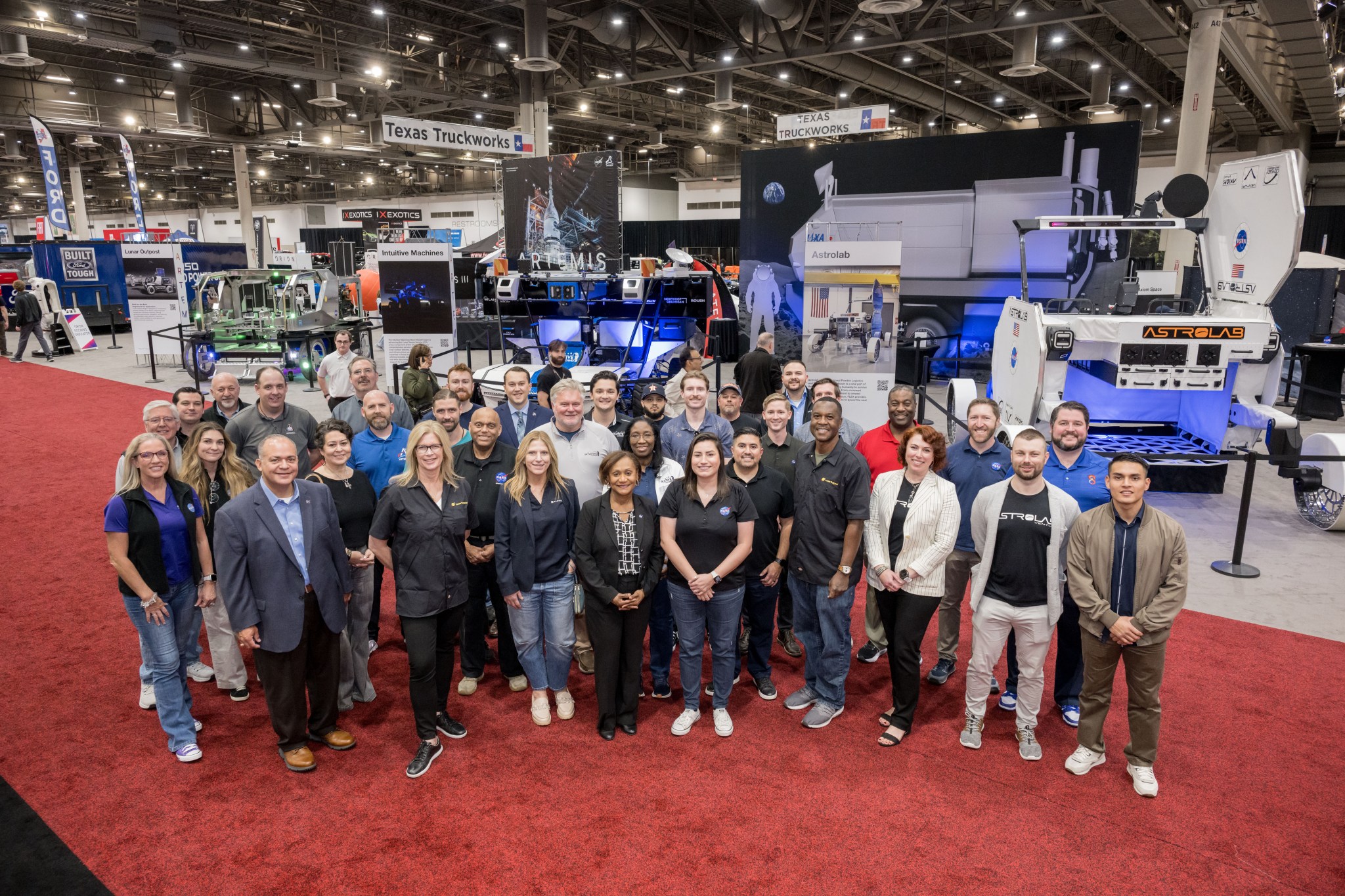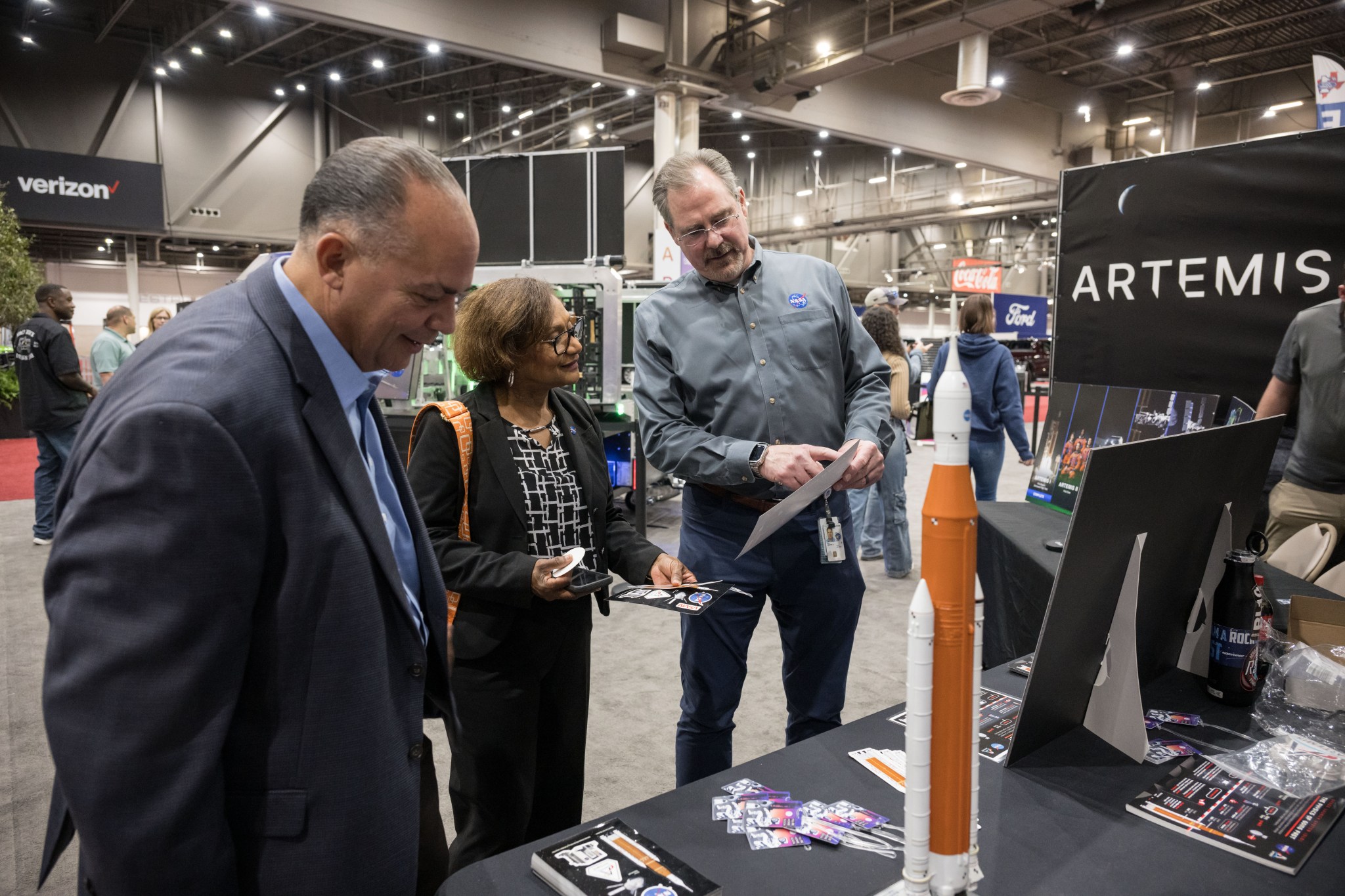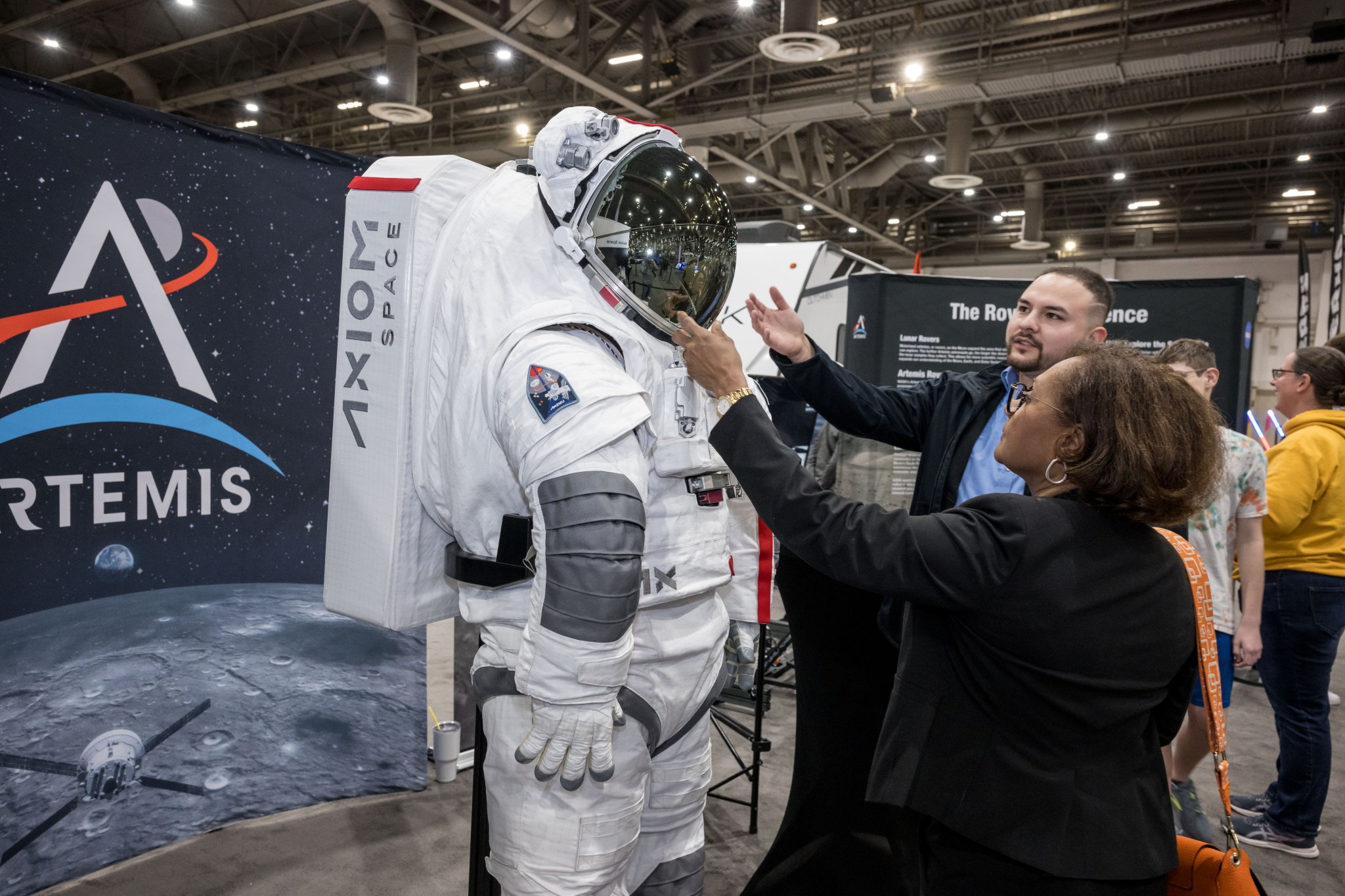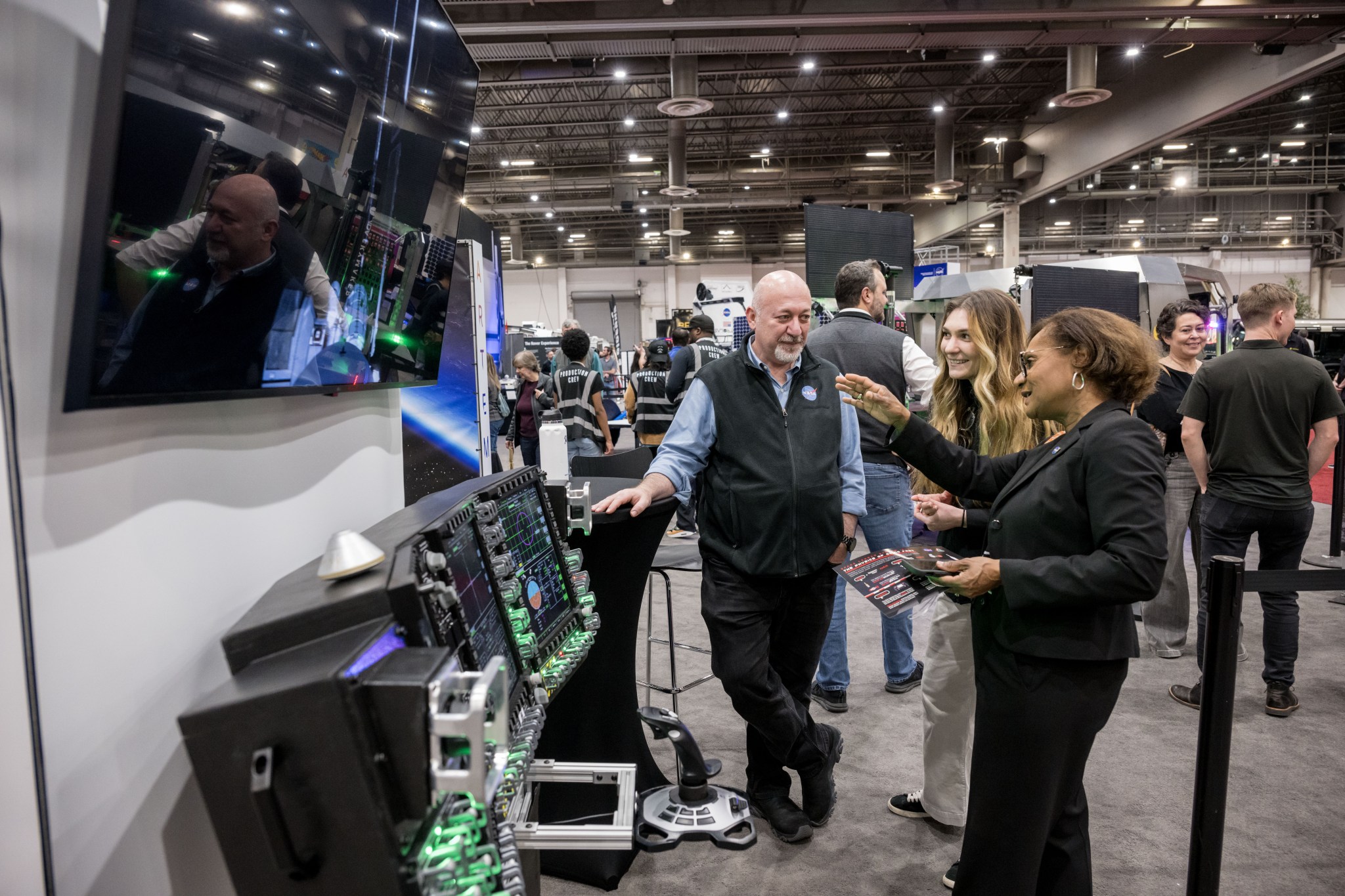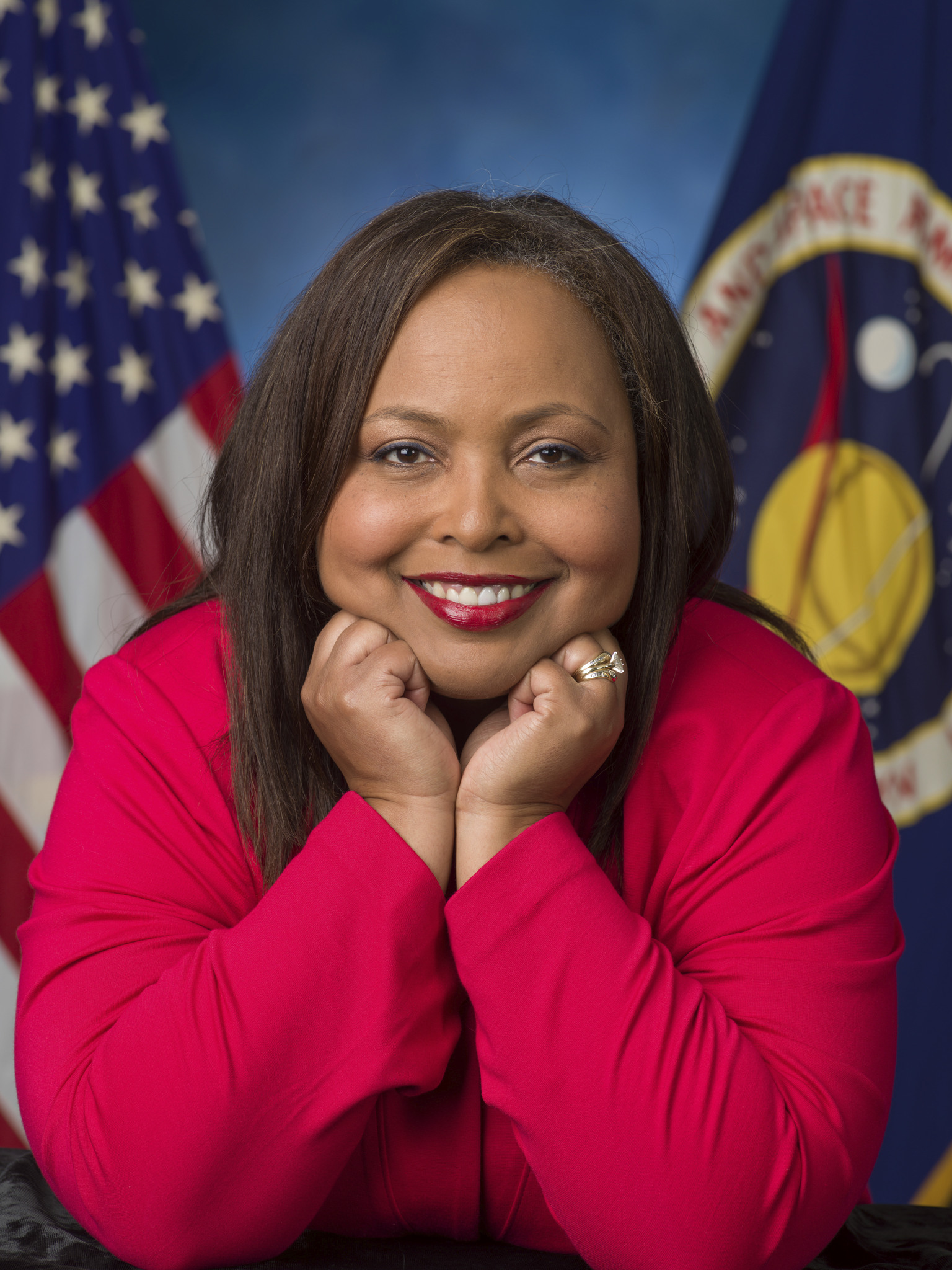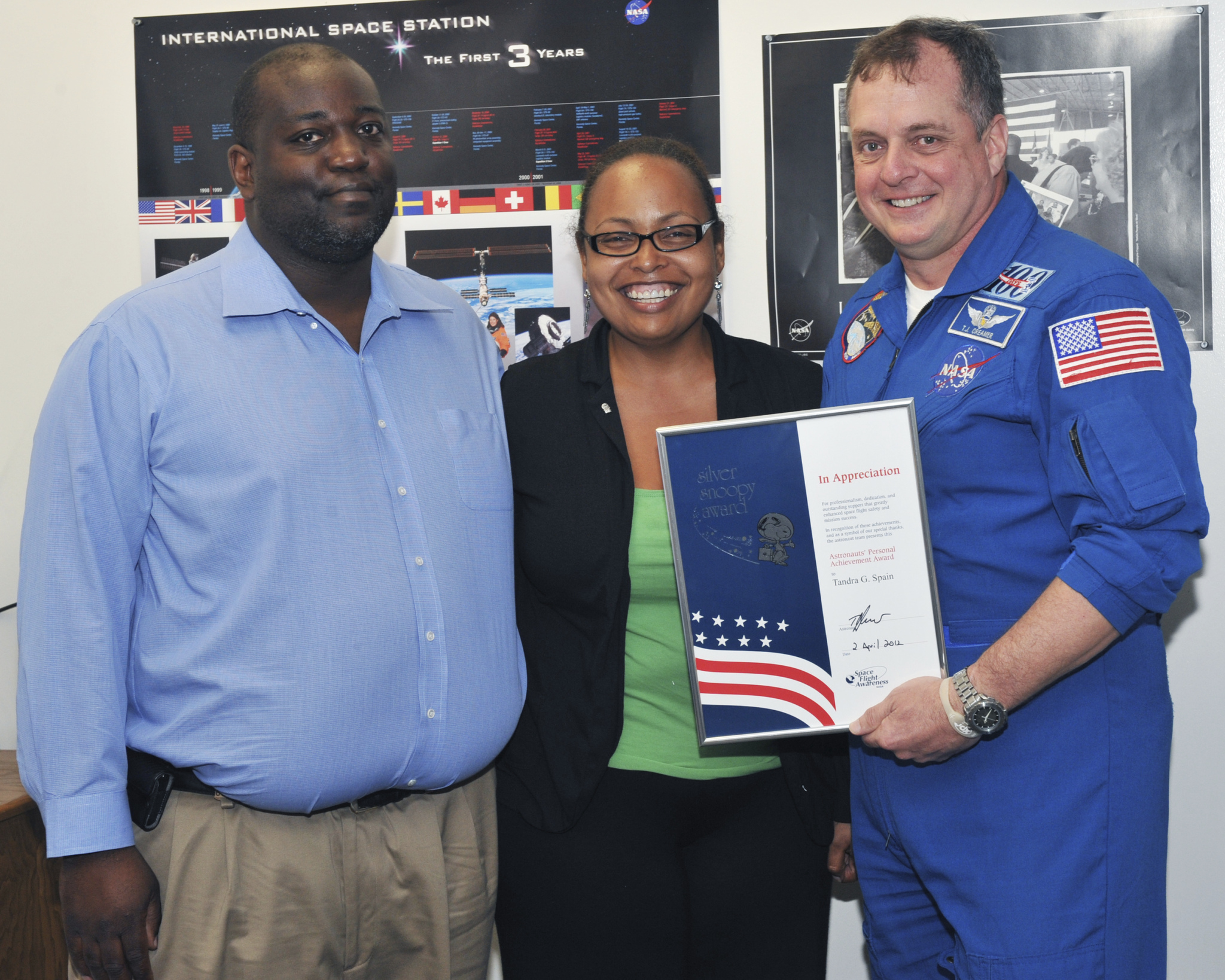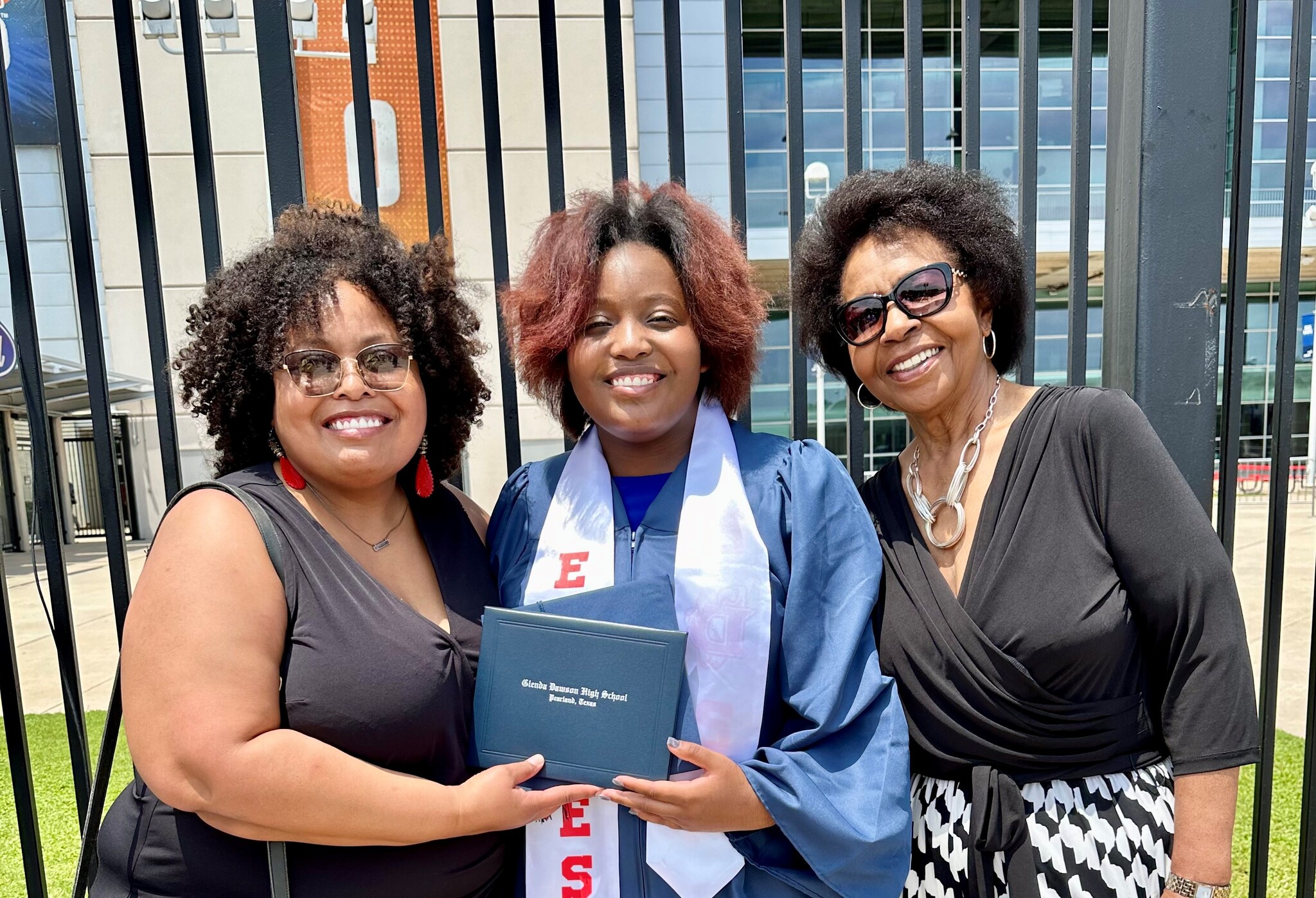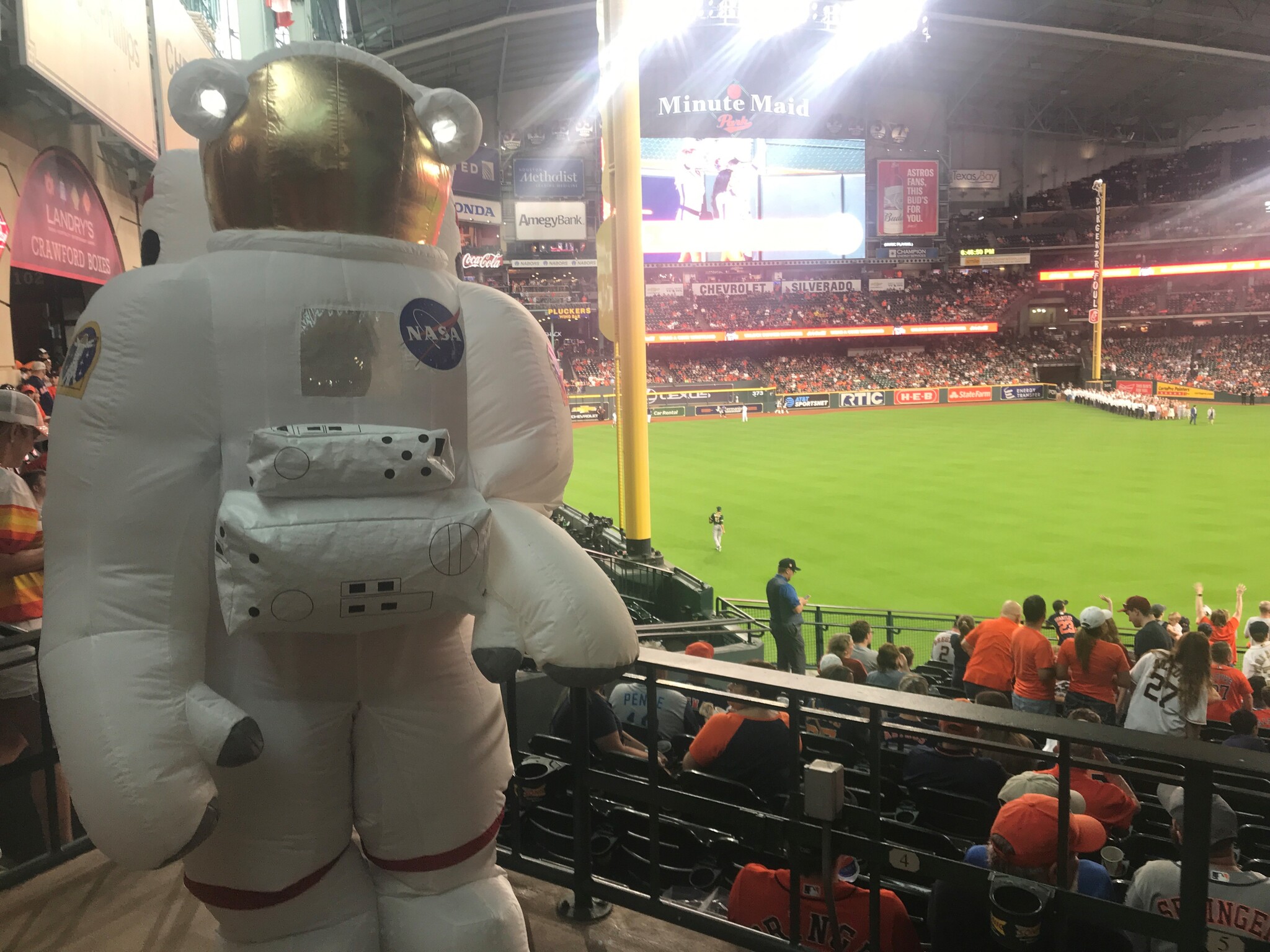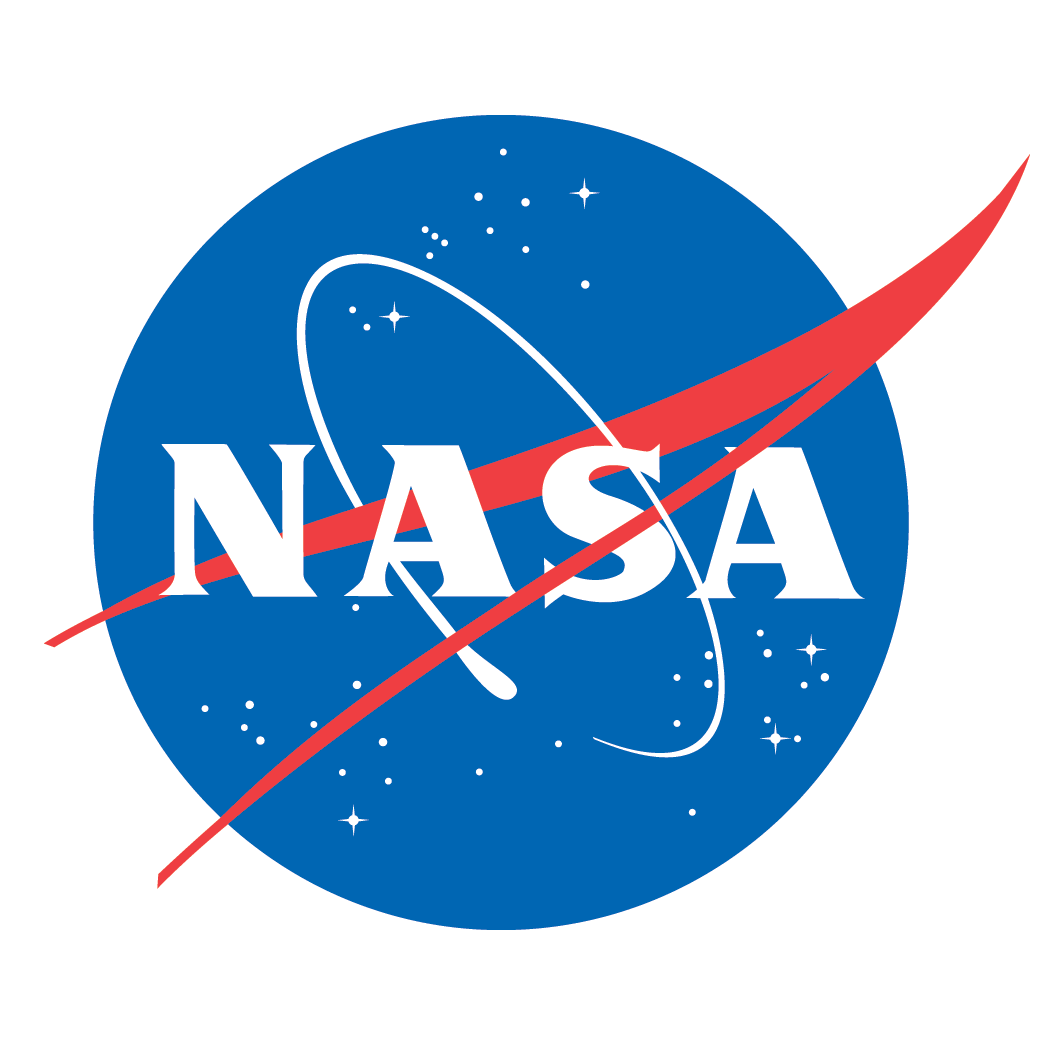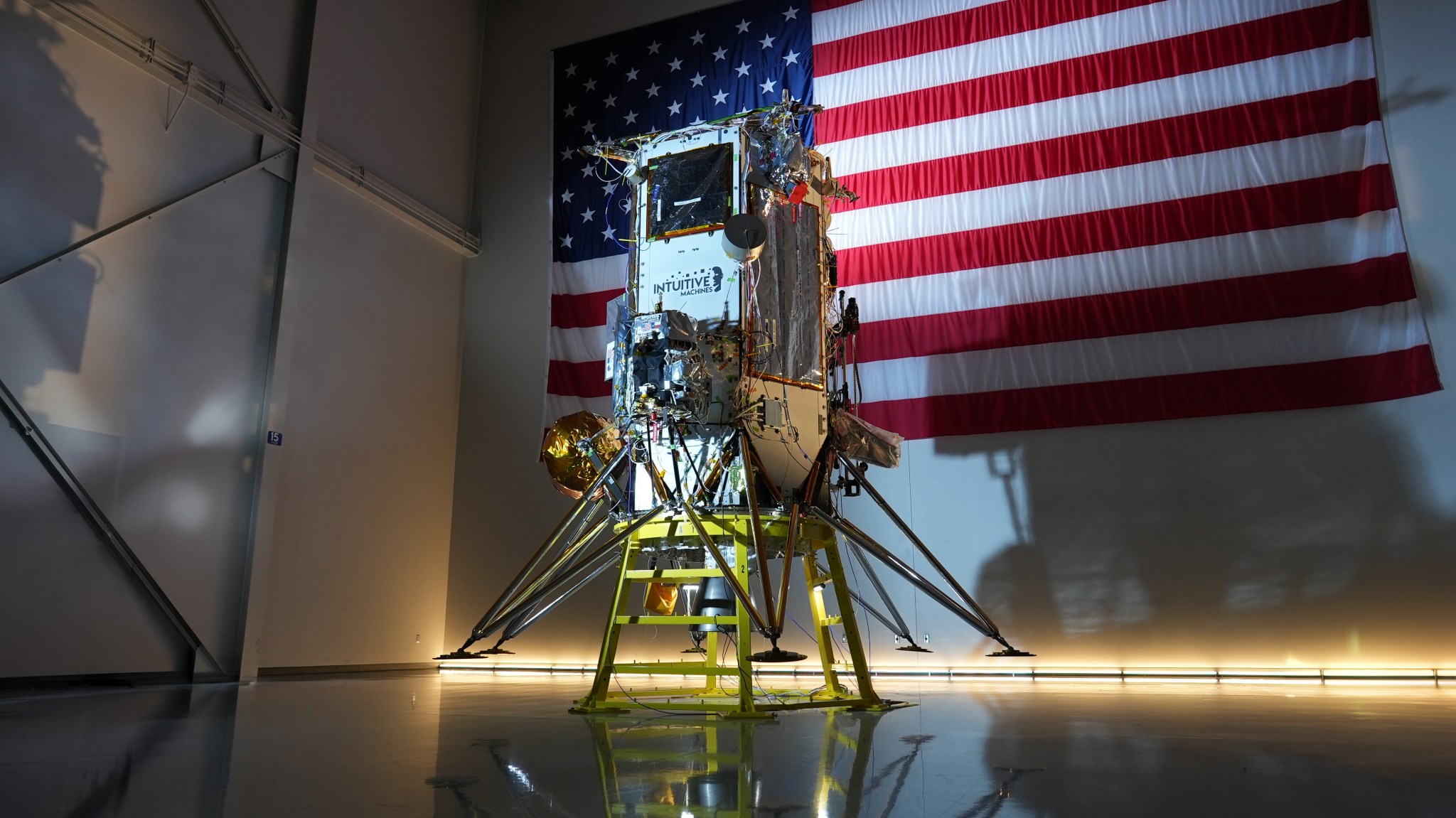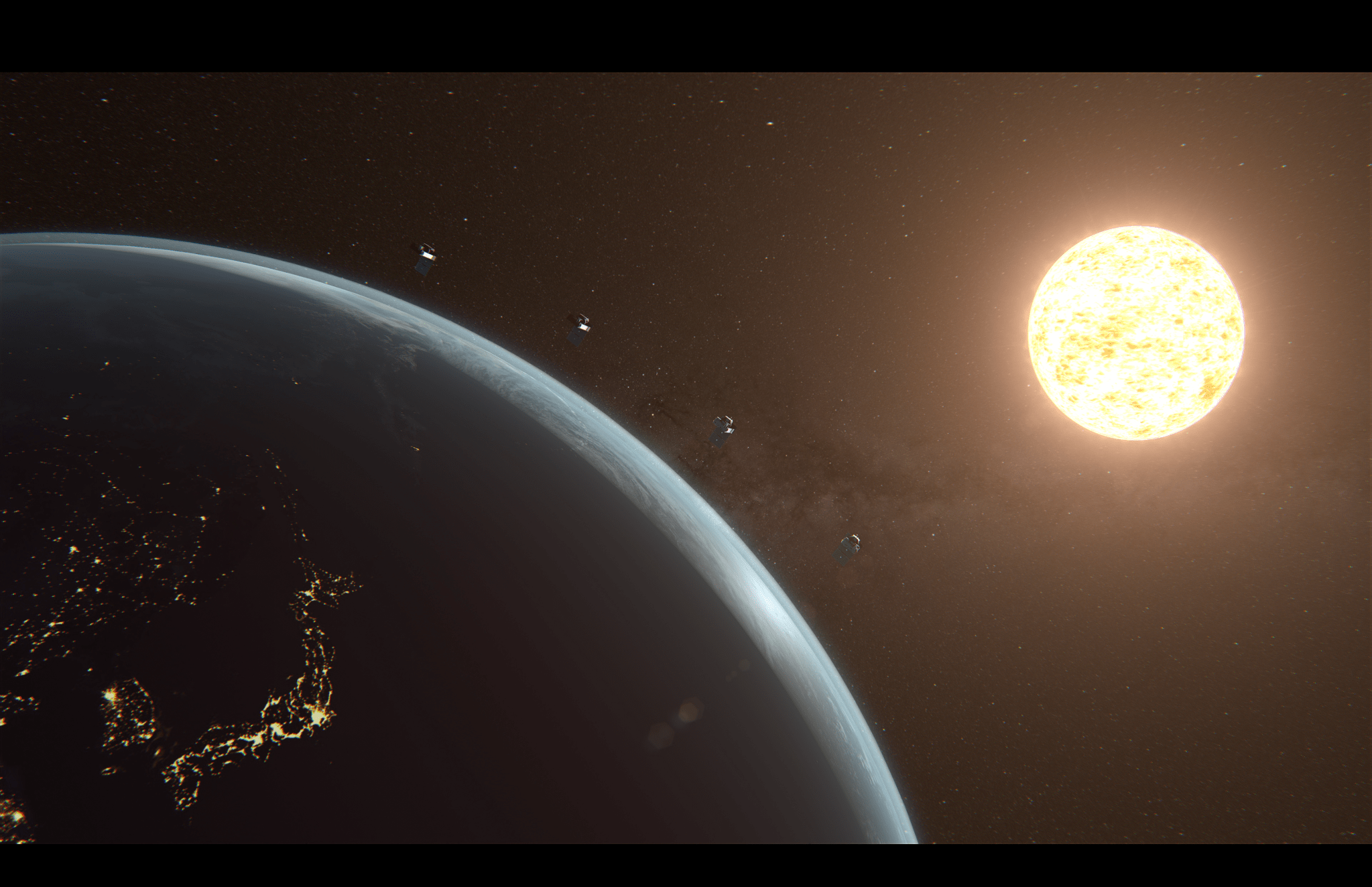Reading view
How Can My Valentine’s Flowers Show the Earth Love, Too?
S.E.C. Moves to Kill Climate Disclosure Rule
Driving the Future: NASA Highlights Artemis at Houston AutoBoative Show
You would not expect to see NASA at a car show—but that’s exactly where Johnson Space Center employees were from Jan. 29 to Feb. 2, 2025, driving the future of space exploration forward.
At the Houston AutoBoative Show, a fusion of the auto and boat show, NASA rolled out its Artemis exhibit at NRG Center for the first time, introducing vehicle enthusiasts to the technologies NASA and commercial partners will use to explore more of the lunar surface than ever before.
The Artemis exhibit stood alongside some of the world’s most advanced cars and boats, offering visitors an up-close look at lunar terrain vehicle mockups from Astrolab, Intuitive Machines, and Lunar Outpost. Later this year, NASA will select the rover that will fly to the Moon as humanity prepares for the next giant leap.
In addition to the rovers, the exhibit featured a mockup of JAXA’s (Japan Aerospace Exploration Agency) pressurized rover, designed as a mobile habitat for astronauts, and Axiom Space’s lunar spacesuit, developed for Artemis III astronauts.
These capabilities will allow astronauts to explore, conduct science research, and live and work on the lunar surface.
Johnson Director Vanessa Wyche visited the Artemis exhibit to highlight the importance of these technologies in advancing lunar exploration. Every lesson learned on the Moon will help scientists and engineers develop the strategies, technologies, and experience needed to send astronauts to Mars.
“By bringing the excitement of lunar exploration to the AutoBoative Show, NASA aims to inspire the next generation of explorers to dream bigger, push farther, and help shape humanity’s future in space,” Wyche said.
NASA’s Artemis campaign is setting the stage for long-term human exploration, working with commercial and international partners to establish a sustained presence on the Moon before progressing to Mars.
To make this vision a reality, NASA is developing rockets, spacecraft, landing systems, spacesuits, rovers, habitats, and more.
Some of the key elements on display at the show included:
- The Orion spacecraft – Designed to take astronauts farther into deep space. Orion will launch atop NASA’s Space Launch System (SLS) rocket, carrying the crew to the Moon on Artemis missions and safely returning them to Earth.
- Lunar terrain vehicles – Developed to transport astronauts across the rugged lunar surface or be remotely operated. NASA recently put these rover mockups to the test at Johnson, where astronauts and engineers, wearing spacesuits, ran through critical maneuvers, tasks, and emergency drills—including a simulated crew rescue.
- Next-gen spacesuits and tools – Through Johnson’s Extravehicular Activity and Human Surface Mobility Program, astronauts’ gear and equipment are designed to ensure safety and efficiency while working on the Moon’s surface.
Guests had the chance to step into the role of an astronaut with interactive experiences like:
- Driving a lunar rover simulator – Testing their skills at the wheel of a virtual Moon rover.
- Practicing a simulated Orion docking – Experiencing the precision needed to connect to Gateway in lunar orbit.
- Exploring Artemis II and III mission roadmaps – Learning about NASA’s upcoming missions and goals.
Attendees also discovered how American companies are delivering science and technology to the Moon through NASA’s Commercial Lunar Payload Services initiative.
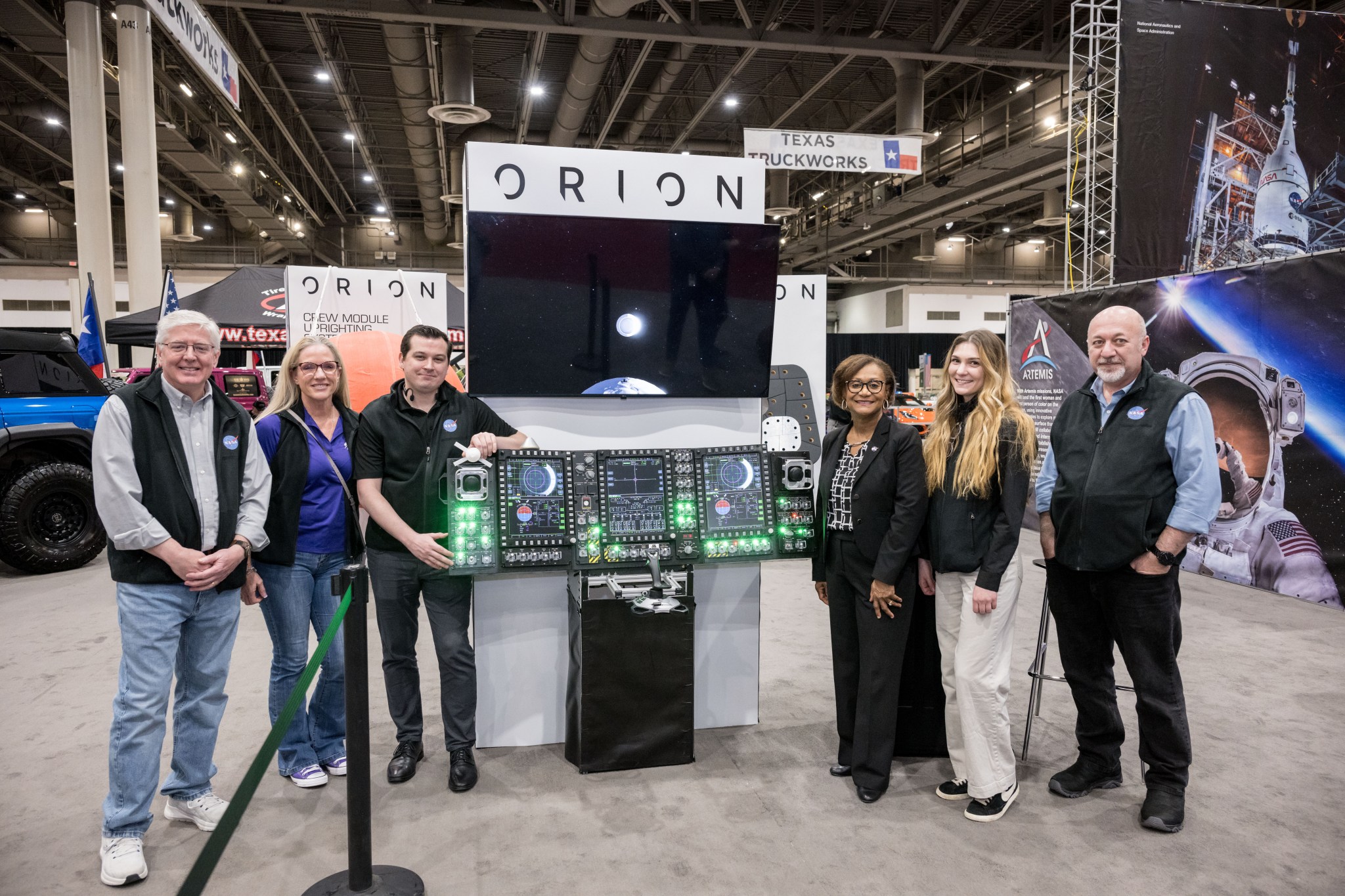
“Everyone can relate to exploration, so it was great to teach people the importance lunar rovers will have on astronauts’ abilities to explore more of the lunar surface while conducting science,” said Victoria Ugalde, communications strategist for the Extravehicular Activity and Human Surface Mobility Program, who coordinated the lunar rovers’ appearance at the show.
Check out the rovers contracted to develop lunar terrain vehicle capabilities below.
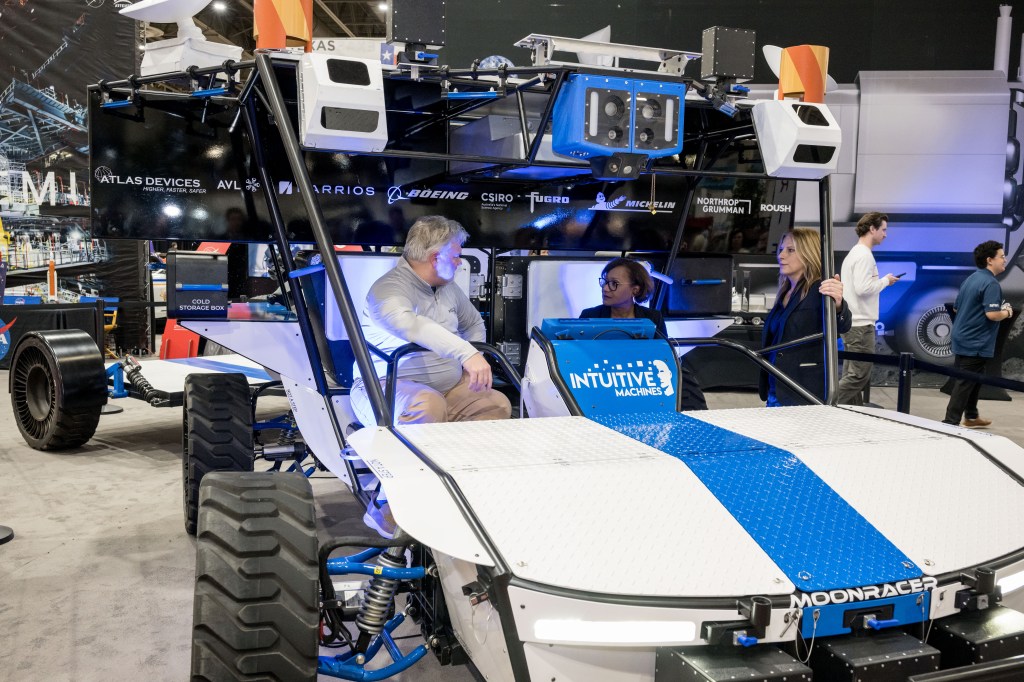
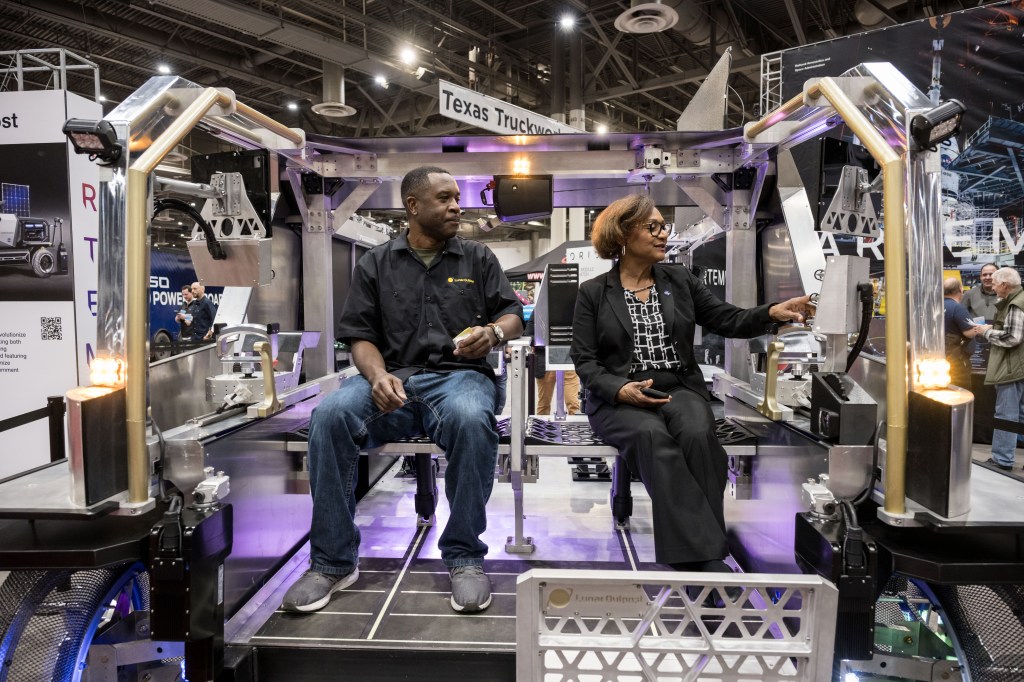
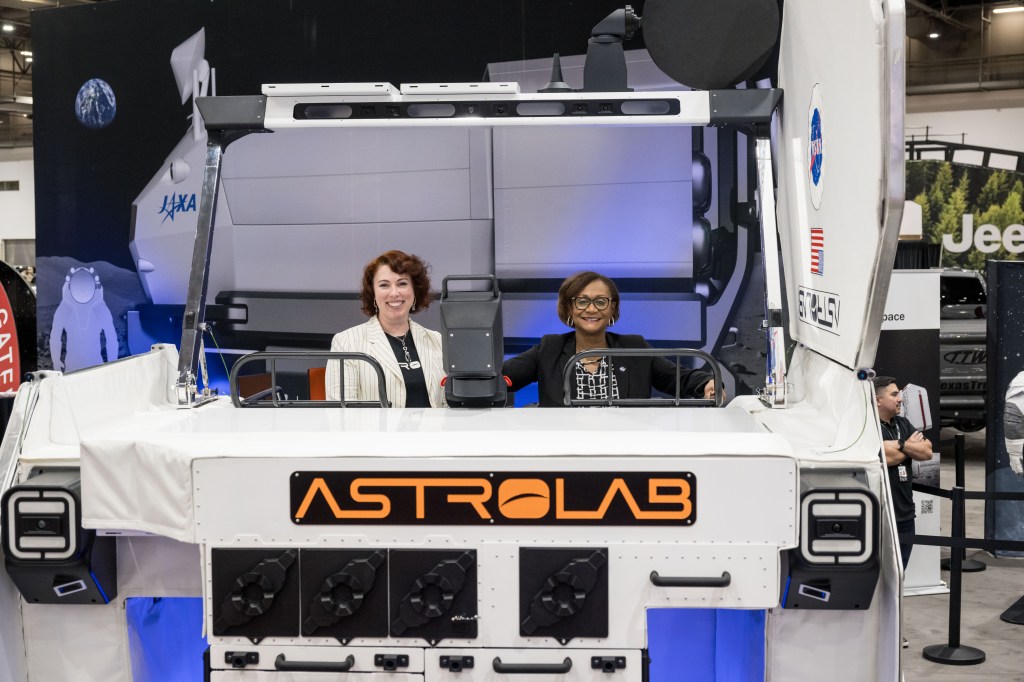
Trump Killed a Major Report on Nature. They’re Trying to Publish It Anyway.
Trump Is Freezing Money for Clean Energy. Republican States Have the Most to Lose.
U.S. Aid Agency’s Climate Programs Aimed to Curb Migration. Now They’re Gone.
Trump Administration Move to Freeze E.V. Charger Funding Confounds States
Trump Vows to End Paper Straws Initiative and Bring Back Plastic
Lawsuit Seeks to Block New York’s Climate Change Law Targeting Energy Companies
In Greenland, the Ice Doesn’t Just Flow, It Quivers and Quakes
Station Nation: Meet Tandra Gill Spain, Computer Resources Senior Project Manager in the Avionics and Software Office
For astronauts aboard the International Space Station, staying connected to loved ones and maintaining a sense of normalcy is critical. That is where Tandra Gill Spain, a computer resources senior project manager in NASA’s Avionics and Software Office, comes in. Spain leads the integration of applications on Apple devices and the hardware integration on the Joint Station Local Area Network, which connects the systems from various space agencies on the International Space Station. She also provides technical lead support to the Systems Engineering and Space Operations Computing teams and certifies hardware for use on the orbiting laboratory.
Spain shares about her career with NASA and more. Read on to learn about her story, her favorite project, and the advice she has for the next generation of explorers.
Where are you from?
I am from Milwaukee, Wisconsin.
Tell us about your role at NASA.
I am the Apple subsystem manager where I lead the integration of applications on Apple devices as well as the hardware integration on the Joint Station Local Area Network. We use a variety of different software but I work specifically with our Apple products. I also provide technical lead support to the Systems Engineering and Space Operations Computing teams. In addition, I select and oversee the certification of hardware for use on the International Space Station, and I research commonly used technology and assess applicability to space operations.
How would you describe your job to family or friends who may not be familiar with NASA?
I normalize living and working in space by providing the comforts and conveniences of living on Earth.

Tandra spain
Computer Resources Senior Project Manager
I get the opportunity to provide the iPads and associated applications that give astronauts the resources to access the internet. Having access to the internet affords them the opportunity to stay as connected as they desire with what is going on back home on Earth (e.g., stream media content, stay in touch with family and friends, and even pay bills). I also provide hardware such as Bluetooth speakers, AirPods, video projectors, and screens.
How long have you been working for NASA?
I have been with the agency for 30 years, including 22 years as a contractor.
What advice would you give to young individuals aspiring to work in the space industry or at NASA?
I have found that there is a place for just about everyone at NASA, therefore, follow your passion. Although many of us are, you don’t have to be a scientist or engineer to work at NASA. Yearn to learn. Pause and listen to those around you. You don’t know what you don’t know, and you will be amazed what gems you’ll learn in the most unexpected situations.
Additionally, be flexible and find gratitude in every experience. Many of the roles that I’ve had over the years didn’t come from a well-crafted, laid-out plan that I executed, but came from taking advantage of the opportunities that presented themselves and doing them to the best of my ability.
What was your path to NASA?
I moved to Houston to work at NASA’s Johnson Space Center immediately upon graduating from college.
Is there someone in the space, aerospace, or science industry that has motivated or inspired you to work for the space program? Or someone you discovered while working for NASA who inspires you?
I spent over half of my career in the Astronaut Office, and I’ve been influenced in different ways by different people, so it wouldn’t be fair to pick just one!
What is your favorite NASA memory?
I’ve worked on so many meaningful projects, but there are two recent projects that stand out.
Humans were not created to be alone, and connection is extremely important. I was able to provide a telehealth platform for astronauts to autonomously video conference with friends and family whenever an internet connection is available. Prior to having this capability, crew were limited to one scheduled video conference a week. It makes me emotional to think that we have moms and dads orbiting the Earth on the space station and they can see their babies before they go to bed, when they wake up in the morning, or even in the middle of the night if needed.
In addition, since iPads are used for work as well as personal activities on station, it is important for my team to be able to efficiently keep the applications and security patches up to date. We completed the software integration and are in the process of wrapping up the certification of the Mac Mini to provide this capability. This will allow us to keep up with all software updates that Apple releases on a regular basis and minimize the amount of crew and flight controller team time associated with the task by approximately 85%.
What do you love sharing about station? What’s important to get across to general audiences to help them understand the benefits to life on Earth?
When I speak to the public about the space station, I like to compare our everyday lives on Earth to life on the station and highlight the use of technology to maintain the connection to those on Earth. For example, most people have a phone. Besides making a phone call, what do you use your phone for? It is amazing to know that the same capabilities exist on station, such as using apps, participating in parent teacher conferences, and more.
If you could have dinner with any astronaut, past or present, who would it be?
I would have dinner with NASA astronaut Ron McNair. He graduated from the same university as I did, and I’ve heard great stories about him.
Do you have a favorite space-related memory or moment that stands out to you?
As I mentioned previously, human connection is extremely important. As an engineer in the Astronaut Office, I worked on a project that provided more frequent email updates when Ku-Band communication was available. Previously, email was synced two to three times a day, and less on the weekend. When the capability went active, I sent the first email exchange.
What are some of the key projects you’ve worked on during your time at NASA? What have been your favorite?
There have been so many projects over the past 30 years that I don’t think I could select just one. There is something however, that I’ve done on many occasions that has brought me pure joy, which is attending outreach events as Johnson’s “Cosmo” mascot, especially Houston Astros games.
What are your hobbies/things you enjoy outside of work?
I enjoy crafting, traveling, mentoring students in Pearland Independent School District, spending time with family, and my Rooted Together community.
Day launch or night launch?
Night launch!
Favorite space movie?
Star Wars (the original version)
NASA “worm” or “meatball” logo?
Meatball
Every day, we’re conducting exciting research aboard our orbiting laboratory that will help us explore further into space and bring benefits back to people on Earth. You can keep up with the latest news, videos, and pictures about space station science on the Station Research & Technology news page. It’s a curated hub of space station research digital media from Johnson and other centers and space agencies.
Sign up for our weekly email newsletter to get the updates delivered directly to you.
Follow updates on social media at @ISS_Research on Twitter, and on the space station accounts on Facebook and Instagram.
The South Bronx Has a Pollution Issue. Congestion Pricing May Worsen It.
NASA to Talk Science, Tech Aboard Next Intuitive Machines Moon Flight
NASA will host a media teleconference at 1 p.m. EST Friday, Feb. 7, to discuss the agency’s science and technology flying aboard Intuitive Machines’ second flight to the Moon. The mission is part of NASA’s CLPS (Commercial Lunar Payload Services) initiative and Artemis campaign to establish a long-term lunar presence.
Audio of the call will stream on the agency’s website at:
Briefing participants include:
- Nicky Fox, associate administrator, Science Mission Directorate, NASA Headquarters
- Niki Werkheiser, director, technology maturation, Space Technology Mission Directorate, NASA Headquarters
- Trent Martin, senior vice president, space systems, Intuitive Machines
To participate by telephone, media must RSVP no later than two hours before the briefing to: ksc-newsroom@mail.nasa.gov. NASA’s media accreditation policy is available online.
Intuitive Machines’ lunar lander, Athena, will launch on a SpaceX Falcon 9 rocket from Launch Complex 39A at NASA’s Kennedy Space Center in Florida. The four-day launch window opens no earlier than Wednesday, Feb. 26.
Among the items on Intuitive Machines’ lander, the IM-2 mission will be one of the first on site, or in-situ, demonstrations of resource utilization on the Moon. A drill and mass spectrometer will measure the potential presence of volatiles or gases from lunar soil in Mons Mouton, a lunar plateau near the Moon’s South Pole. In addition, a passive Laser Retroreflector Array on the top deck of the lander will bounce laser light back at any orbiting or incoming spacecraft to give future spacecraft a permanent reference point on the lunar surface. Other technology instruments on this delivery will demonstrate a robust surface communications system and deploy a propulsive drone that can hop across the lunar surface.
Launching as a rideshare with the IM-2 delivery, NASA’s Lunar Trailblazer spacecraft also will begin its journey to lunar orbit, where it will map the distribution of the different forms of water on the Moon.
Under the CLPS model, NASA is investing in commercial delivery services to the Moon to enable industry growth and support long-term lunar exploration. As a primary customer for CLPS deliveries, NASA is one of many customers for these flights.
For updates, follow on:
https://blogs.nasa.gov/artemis
-end-
Alise Fisher / Jasmine Hopkins
Headquarters, Washington
202-358-2546
alise.m.fisher@nasa.gov / jasmine.s.hopkins@nasa.gov
Natalia Riusech / Nilufar Ramji
Johnson Space Center, Houston
281-483-5111
nataila.s.riusech@nasa.gov / nilufar.ramji@nasa.gov
Antonia Jaramillo
Kennedy Space Center, Florida
321-867-2468
antonia.jaramillobotero@nasa.gov
Trump’s Halt on Climate Spending Freezes Jobs and Stalls Projects
7 Steps L.A. Could Take to Gird Against Future Wildfires
Doug Burgum Is Confirmed by Senate as Interior Secretary
NASA Invites Media to Discuss PUNCH Mission to Study Solar Wind
NASA will hold a media teleconference at 2 p.m. EST on Tuesday, Feb. 4, to share information about the agency’s upcoming PUNCH (Polarimeter to Unify the Corona and Heliosphere) mission, which is targeted to launch no earlier than Thursday, Feb. 27.
The agency’s PUNCH mission is a constellation of four small satellites. When they arrive in low Earth orbit, the satellites will make global, 3D observations of the Sun’s outer atmosphere, the corona, and help NASA learn how the mass and energy there become solar wind. By imaging the Sun’s corona and the solar wind together, scientists hope to better understand the entire inner heliosphere – Sun, solar wind, and Earth – as a single connected system.
Audio of the teleconference will stream live on the agency’s website at:
Participants include:
- Madhulika Guhathakurta, NASA program scientist, NASA Headquarters
- Nicholeen Viall, PUNCH mission scientist, NASA’s Goddard Space Flight Center
- Craig DeForest, PUNCH principal investigator, Southwest Research Institute
To participate in the media teleconference, media must RSVP no later than 12 p.m. on Feb. 4 to: Abbey Interrante at: abbey.a.interrante@nasa.gov. NASA’s media accreditation policy is available online.
The PUNCH mission will share a ride to space with NASA’s SPHEREx (Spectro-Photometer for the History of the Universe, Epoch of Reionization and Ices Explorer) space telescope on a SpaceX Falcon 9 rocket from Space Launch Complex 4 East at Vandenberg Space Force Base in California.
The Southwest Research Institute in Boulder, Colorado, leads the PUNCH mission. The mission is managed by the Explorers Program Office at NASA’s Goddard Space Flight Center in Greenbelt, Maryland, for NASA’s Science Mission Directorate in Washington.
To learn more about PUNCH, please visit:
-end-
Karen Fox
Headquarters, Washington
202-358-1600
karen.fox@nasa.gov
Sarah Frazier
Goddard Space Flight Center, Greenbelt, Md.
202-853-7191
sarah.frazier@nasa.gov
